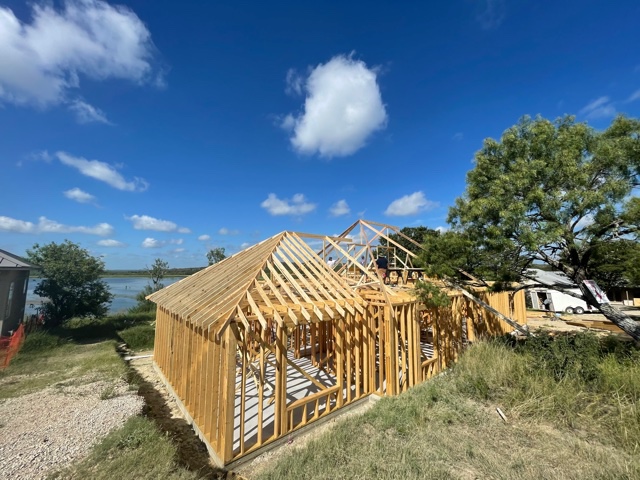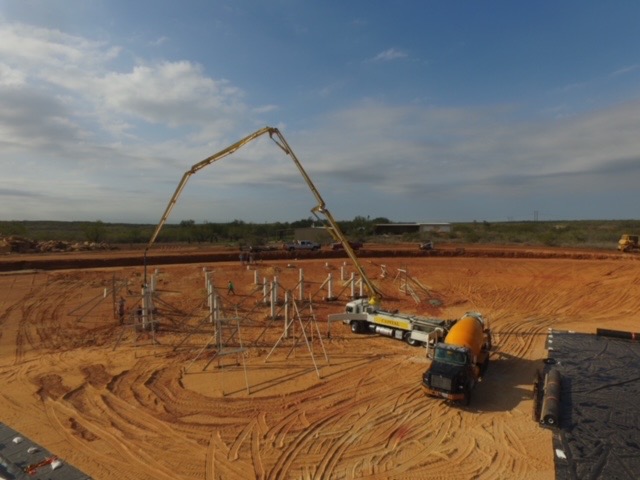By Mark Matthews, Broker Associate, Republic Ranches, Featured in Land Investor Magazine volume 8

You’ve decided to build a new home on your ranch. What next? Rural construction presents many unique challenges compared to urban construction. To be successful, you need to understand what’s involved, and what choices you have.
First and foremost, have a complete set of professional plans. Having a set of plans will save time and money. Next, have a dream budget and a realistic budget—and understand the difference. If you don’t have the money, or are within ninety percent of your budget after estimates, either don’t start the project, change your plans to fit the budget, or spend more money.
Next, decide who is going to oversee the project. Will you hire a general contractor, or will you be your own contractor? Are there any general contractors in the area, or will you have to hire one from the city? Asking an urban builder to build a house on a ranch can be risky. Will they know how to get water, sewer and electricity for the home? Will their subs drive that far? Will you provide a place for workers to eat and sleep? My experience has been that an experienced local general contractor will outperform both a builder from the city, and an owner acting as a general contractor. Knowledge of the local labor force, utility providers, and suppliers is well worth the contractor’s fee. That being said, check references, and look at several of their projects.
Fees aren’t the only thing to negotiate with the general contractor. Have a construction contract, and have an attorney review it. Start with the terms of construction cost, plus the contractor’s fee, or a firm bid. If you are comfortable with the contractor, ‘cost plus’ can be a better deal for both the owner and the contractor. With this format, a builder should be able to present some categories with firm bids. This would include items like the foundation, lumber, plumbing, electrical, and framing labor. Other categories, like trim, would include estimates; fixtures and countertops would be allowances. Firm bids may provide a feeling of security, but they can have a substantial cushion built in for the builder, and change orders can be expensive.
Another item in the contract to consider is insurance, and workers’ compensation. Depending on the area you are building in, many subcontractors may not carry liability insurance or workers’ compensation. Requiring them to have it may force your builder to hire more expensive subs from urban areas. Your rural builder may have alternatives that will be acceptable to you and your attorney. One example would be to carry uninsured subcontractors’ insurance, if it’s available in your area. Additionally, it may be advisable to have all subcontractors sign independent contractor agreements.
What to consider when choosing a build site
- Choose the proper building site. Unlike building on a lot in the city, you have many options as to where to place your home. Know where the floodplain is—and don’t build in it. If you do, make sure you have an engineer design the site, so your house won’t flood.
- How far is the site from existing electricity? Moving electricity can cost $15,000 and more per mile.
- You’ll need to build a road to get to your new house.
- What’s the soil like at the site? Make sure you have an engineered foundation. It usually costs more to build on unstable soils, slopes, and solid rocks.
- The orientation of the house is critical. Most owners are tempted to face certain parts of the house towards what they want to look at. Just as important is to consider outdoor spaces, and how and when they will be used. Use the house to block cold winds in the winter, catch cool breezes in the summer, and to block hot setting suns.

Certain factors that affect cost, like building materials, finishes, and fixtures, are similar to those for urban homes. The differences are usually in the cost of delivery. Companies charge more to deliver to a rural site than they do an urban location. Labor is another area where you’re likely to see higher costs. The number of local subcontractors is dramatically different than in the city. With less competition, it is harder to negotiate fees and secure multiple bids. That being said, don’t be too quick to fire all your subs when things get frustrating. Do you want to paint your own house?
Building on your property is a very exciting, though challenging process. Things will go wrong, and they will take longer than you expect. Be patient. The current building environment has been especially challenging due to increased costs, and material and labor shortages. A home that could be built three years ago for two hundred dollars per square foot could cost well over three hundred dollars per square foot today. Hire a general contractor who will be a part of your team. It will be worth it in the end.
